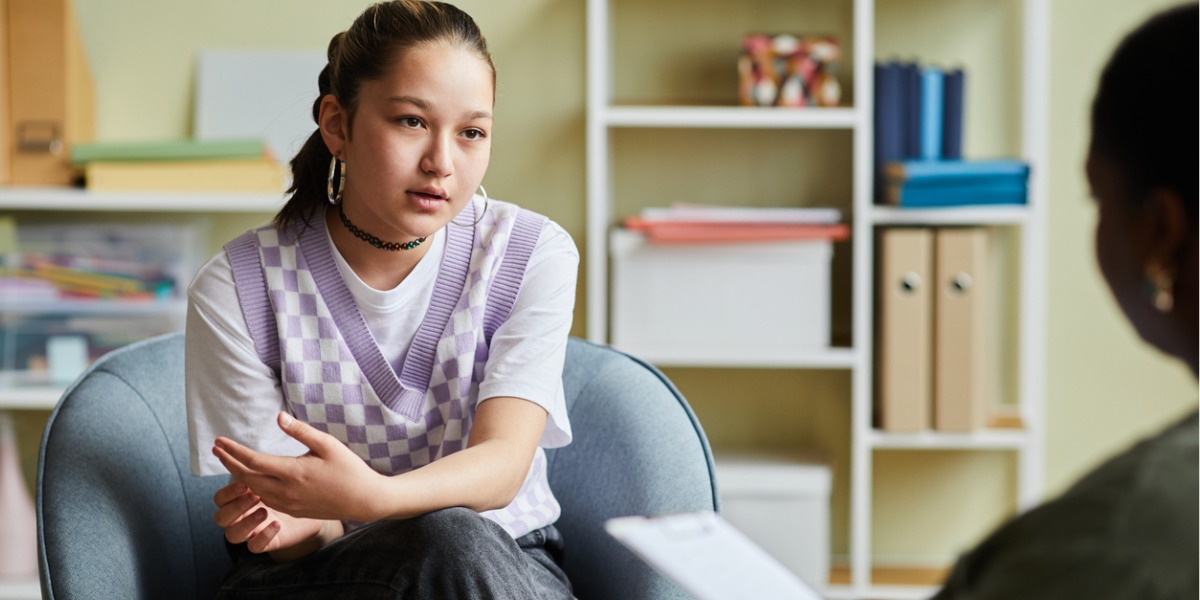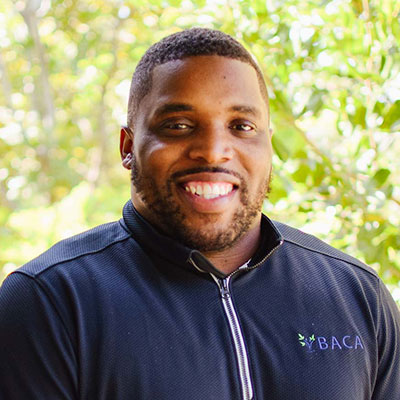When your teenager receives a clinical diagnosis for depression or a depressive disorder and a referral for care, it can be challenging to decide what specific path to pursue, because there are several types of effective outpatient programs for teens available.
Most parents have heard of residential treatment and psychiatric hospitalization, which are examples of intensive and immersive treatment. Hospitalization is the most intensive and immersive type of treatment program and primarily focuses on safety and stabilization. Residential treatment is intense and immersive but prioritizes treatment and recovery rather than managing acute and potentially dangerous mental health symptoms.
Most parents have also heard of standard, traditional outpatient treatment, which is synonymous with what most people think of as being in therapy. This means meeting with a therapist once or twice a week, depending on the patient and provider, and is most often appropriate for people with mild or moderate depression, or people with severe depression who have already engaged in immersive care and developed the tools necessary to manage their symptoms with limited input from their professional support system.
This brings us to an important topic related to teen depression: your teen may receive a diagnosis for mild, moderate, or severe depression, which plays a role in the level of immersion and intensity your teen may need.
Depression Severity and Levels of Care
On one end of the scale of severity, teens with mild depression may have symptoms that are confusing, uncomfortable, and hard to process on their own. When symptoms are problematic but not debilitating, teens most often engage in traditional outpatient treatment.
To learn more about our outpatient programs for teens, click here:
Child, Adolescent, and Young Adult Psychiatry
Teens with moderate depression may have symptoms that require attending therapy more often – twice a week, in some cases – or require a slightly more immersive level of outpatient care, called intensive outpatient treatment (IOP).
To learn more about our IOP outpatient programs for teens, click here:
BACA Teen IOP
On the other end of the scale of severity, teens with severe depression may have symptoms that require hospitalization, residential treatment, or the most immersive level of outpatient care, called partial hospitalization treatment (PHP).
Learn more about our PHP outpatient programs for teens, click here:
BACA Teen PHP
During the rest of this article, we’ll focus on the differences between the three levels of outpatient treatment we mention above, in order to help prepare you for the decisions you need to make when seeking treatment for your teen.
What Level of Outpatient Support Does My Teen Need?
Now it’s time to answer a question we haven’t addressed directly: how does a mental health provider decide what type of program is best for your teen?
The first step is confirming or arriving at a diagnosis. Providers use criteria established by the Diagnostic and Statistical Manual of Mental Disorders, Volume Five (DSM-5) to diagnose a patient. Next, they consider the following factors to determine an appropriate level of care:
- Symptom severity: are depressive symptoms mild, moderate, or severe?
- The acuity of their disorder, which means how serious it is right now: are the symptoms present sometimes, or always?
- Symptom impact/disruption: do depressive symptoms prevent full participation in daily activity?
- Prior treatment and support: has your teen previously engaged in treatment for depression or any other mental health disorder?
After your teen receives a full psychiatric evaluation administered by skilled and experienced mental health professional, they’ll most likely receive two things:
Diagnosis:
If they meet clinical criteria for a mental health disorder such as depression, the assessing provider will confirm the diagnosis. If they don’t meet clinical criteria, they won’t receive a diagnosis. confirmation your teen doesn’t have a mental health disorder.
Referral:
If they receive a diagnosis for a mental health disorder, they’ll most likely receive a referral for treatment at a level of care that matches their symptom profile and treatment history.
Outpatient Programs for Teens With Depression: How Do They Work?
At this point, we’ve outlined how a mental health professional might arrive at a diagnosis and determine an appropriate level of care for your teenager. If they receive a referral or outpatient treatment, the provider may recommend one of three levels of care:
- Outpatient treatment (OP)
- Intensive outpatient (IOP)
- Partial hospitalization treatment (PHP)
We’ll describe how each level of care works now.
Traditional Outpatient Programs: Least Intensive
A teen with a confirmed diagnosis for mild or moderate major depressive disorder (MDD) may receive a referral for one of several types of outpatient programs for teens. The basic level of care – outpatient treatment – is appropriate for teens with depressive symptoms that have a minor, but noticeable, impact on the following life domains:
- School participation
- School performance
- Family life
- Participation in extracurricular activities
- Participation in social activities
Outpatient programs for teens most often include office visits with a mental health provider once or twice a week. Outpatient programs are the first and least immersive level of treatment on the continuum of care for teen depression.
Intensive Outpatient Programs: More Time, More Intensive
After outpatient programs for teens, intensive outpatient treatment (IOP) is the next level up in intensity and immersion. This level of care may be appropriate for teens with mild, moderate, or severe MDD with disruptive symptoms that have a negative impact on the life domains we list above – school, home, extracurricular activities, social activities – but are not so disruptive they prevent them from going to school and living at home.
IOP programs for teens most often include treatment for around three hours per day – a half day – during weekdays, with most programs requiring attendance between three and five days per week. IOP programs are the second step or level on the continuum of care: more immersive than outpatient treatment, less immersive than PHP, residential treatment, or hospitalization.
Partial Hospitalization Programs (PHP): Intensive, Immersive Care While Living at Home
After intensive outpatient programs (OP) for teens, partial hospitalization programs are the next level up in intensity and immersion. This level of care may be appropriate for teens with severe depressive symptoms that prevent them from functioning at/fully participating in/attending school, but not so severe they prevent them from living at home.
PHP programs for teens most often involve a full day of treatment, five days a week. Most teens in PHP programs continue living at home while receiving treatment. PHP programs are the third step on the continuum of care: more immersive than outpatient and IOP treatment, less immersive than residential treatment or hospitalization. On the continuum of care for teen depression, PHP is the most intensive and immersive level of treatment available.
I’ve Learned About Outpatient Programs for Teens: What Happens Next?
The next step is to learn more about the diagnosis your teen receives.
We’ll assume your teenager received a diagnosis of depression or a depressive disorder and now you’re looking for a treatment center that meets your family needs. As we mention above, your family needs depend on the specific diagnosis and the level of severity of the disorder.
For instance, your teen may receive a diagnosis for any of the following types of depression:
Major depressive disorder (MDD):
This is what most people think of when they hear the word depression. Treatment for MDD typically involves psychotherapy, medication, family support, and lifestyle changes.
Persistent depressive disorder (PDD):
This was previously known as dysthymia, and describes a type of low-grade depression characterized by the presence of depressive symptoms for two years or more that are uncomfortable and disruptive, but don’t reach the intensity or severity of symptoms associated with MDD. Treatment for PDD typically involves psychotherapy, family support, and lifestyle changes. Medication may be appropriate in some cases, but not in others.
Bipolar disorder (BD):
Most people first heard of this disorder under its old name, manic depression. Bipolar disorder is characterized by a combination of depressive episodes and manic episodes. Depressive episodes in bipolar disorder resemble MDD, but manic episodes are the opposite: they’re periods of elevated mood and high levels of energy or activity. Treatment for BD typically involves psychotherapy, medication, family support, and lifestyle changes. Medication for BD is not the same as medication for MDD: patients typically receive a mood stabilizer rather than an antidepressant.
Seasonal affective disorder (SAD):
This is a type of depression that peaks during a particular season, typically fall or winter. Experts theorize the change in the length of days and hours of available sunlight impact the cycles of chemical balance in the human brain, resulting in changes in mood. Some people with SAD engage in typical psychotherapy and take medication, while others pursue an alternative treatment called light therapy.
Premenstrual depressive disorder (PMDD):
This is a severe consequence of premenstrual syndrome (PMS). Symptoms typically begin after ovulation and begin to fade with the onset of menstruation. Treatment for PMDD typically involves treatment with antidepressants such as selective serotonin reuptake inhibitors (SSRIs).
Finding the Best Program for Your Teen
You may be surprised to learn there are several subtypes of depression. The six types we list above are among the most common. To keep things relatively simple, we left the rarest forms of depression off the list.
Now, about this question:
What Happens Next?
After evaluation, diagnosis, and learning more about the specific diagnosis your teen receives, the next step is to find a treatment center that specializes in – or has clinicians who specialize in – the type of depressive disorder your teen has and have experience providing treatment at the level of care your teen needs.
If you’re in the Bay Area of California, please consider calling us here at Bay Area Clinical Associates (BACA):
Free Screening: (844) 763-5532
If you’re not in the Bay Area of California, then we suggest seeking a treatment center that checks the following boxes:
- Specializes in teen depression or teen mental health
- Offers integrated, holistic treatment programs
- Includes family members in the treatment process
To get started, please refer to these helpful online resources:
- The American Academy of Child and Adolescent Psychiatry (AACAP) provides an excellent, easy to use treatment finder for locating licensed and qualified psychiatrists, therapists, and counselors in your area.
- The National Institute of Mental Health (NIMH) maintains a page for youth, adolescent, and family mental health.
- The National Alliance on Mental Illness also maintains a page focused on teen mental health, with links for finding help and accessing mental health resources at school and public/community health agencies.
Remember: the sooner a teen with a mental health disorder gets the treatment they need, the better the outcome.


